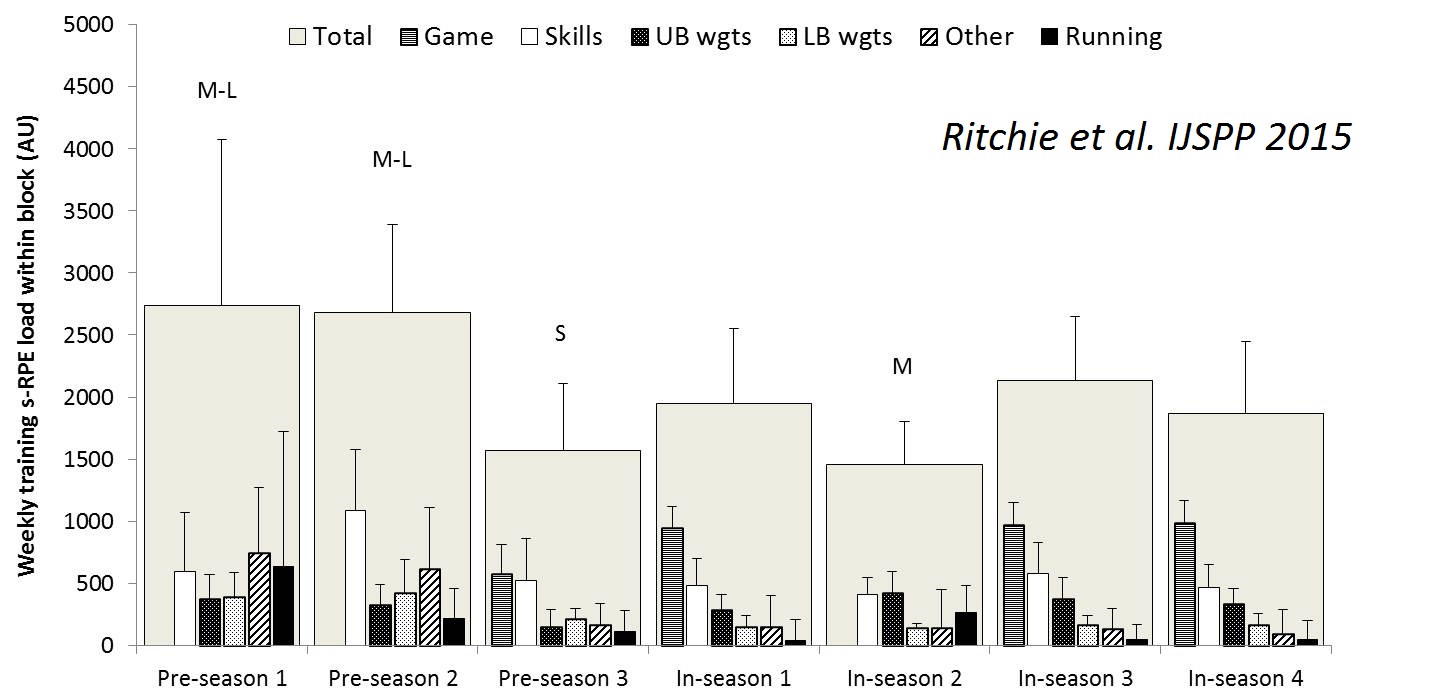Quantification of training and competition load across a season in an elite Australian Football Club
Ritchie D, Hopkins WG, Buchheit M, Cordy J, & Bartlett JD. Quantification of training and competition load across a season in an elite Australian Football Club. IJSPP, In press.
 Full text here
Full text here
Abstract
Purpose: Load monitoring in Australian Football (AF) has been widely adopted, yet team sport periodization strategies are relatively unknown. Here we have aimed to quantify training and competition load across a season in an elite AF team, using rating of perceived exertion (RPE) and GPS. tracking.
Methods: Weekly totals for RPE and GPS loads (including accelerometer data; Playerload) were obtained for 44 players across a full season for each training modality and for competition. General linear mixed models compared mean weekly load between 3x pre-season and 4x in-season blocks. Effects were assessed with inferences about magnitudes standardized with between-player SD.
Results: Total RPE load was most likely greater during pre-season, where the majority of load was obtained via skills and conditioning. There was a large reduction in RPE load in the last pre-season block. During in-season, half the total load came from games and the remaining half from training, predominantly skills and upper-body weights. Total distance, high-intensity running, and Playerload showed large to very large reductions from pre-season to in-season, whereas changes in mean speed were trivial across all blocks. All these effects were clear at the 99% level.
Conclusions: These data provide useful information about targeted periods of loading and unloading across different stages of a season. Our study also provides a framework for further investigation of training periodization in AF teams.
Key Words: Training organisation, training distribution, team sports





